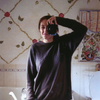

What Are the Colored Bars on TV Called?
source link: https://www.makeuseof.com/what-are-color-bars-on-tv/
Go to the source link to view the article. You can view the picture content, updated content and better typesetting reading experience. If the link is broken, please click the button below to view the snapshot at that time.
What Are the Colored Bars on TV Called?
Published 11 hours ago
The colored bars, the sine-wave tone—takes you back, doesn't it? But what are those colored bars for on your TV, anyway?
If you're a child of the nineties, there was likely little more terrifying to you in your youth than seeing color bars on TV and hearing the ear-splitting and confounding tone associated with them. Why, when all we ever asked for was Spongebob and the Sunday game?
Another name for the colorful bars and nostalgic tone is Engineering Guideline 1-1990. This standard test pattern has been used historically to ensure that the output of a given display is true to color and tone according to the original signal.
What Are Bars and Tone?
The history of color bars and tone is a long and storied one. Many test patterns came into being in the 1950s before passing away behind us in favor of new ones.
The National Television System Committee, or NTSC for short, was the first major distributor of color television and, naturally, at the helm of this movement.
Before color bars were recognized widely as the most appropriate solution, imagists needed some way to calibrate color for broadcast distribution formally, especially over long distances. After Norbert D. Larky came up with the first patented set of color bars for television, the design was built upon and improved by others until it became the NTSC standard that we know and love today.
At the 31st Annual Broadcast Engineering Conference, A. A. Goldberg submitted a proposal for a superior color bar test signal. This new version made it much easier to adjust an image for brightness and saturation by eye; each color to be compared now had an adjacent patch of the appropriate hue right underneath.
This design enjoyed a preliminary six-month trial run at CBS before being accepted by the industry at large. The Society of Motion Picture and Television Engineers, also known as SMPTE, eventually even went so far as to copyright the signal under their own name.
SMPTE color bars are backward-compatible with black-and-white television, and the current layout accommodates over one hundred different television resolutions.
What Do SMPTE Bars and Tone Do?
SMPTE bars and tone are used as a reference for both picture and sound. It's a test signal sent to a local station ahead of the program to be broadcast.
After receiving this preliminary test signal, local stations can then adjust their equipment in anticipation of the actual show itself. Then, when they broadcast it to the residential homes of consumers, they can be assured that what they're sending out themselves matches the signal that they received precisely.
It's sort of like a game of telephone. The purpose of SMPTE bars and tone is to preserve the signal's integrity through every single leg of the race.
Bars and Tone Specifications
Color bars represent seven key chromatic values prominently:
- 77 IRE Gray
- 69 IRE Yellow
- 56 IRE Cyan
- 48 IRE Green
- 36 IRE Magenta
- 28 IRE Red
- 15 IRE Blue
These seven colors are the ones you'll recognize as the vertical bars that take up most of the field.
Below them, you'll see swatches that allow technicians to compare them with one another; these colors are all displayed at 75% intensity. In some cases, a full-field color bar signal, in which these taller columns take up the entirety of the screen, may be used instead of this standard color bar signal.
Below these swatches, you'll find -In-Phase and +Quadrature indicators (100 IRE White, 0 IRE Black), as well as a set of PLUGE bars (3.5 IRE, 7.5 IRE, and 11.5 IRE, respectively). The PLUGE bars, if your monitor is calibrated optimally, should be indistinguishable.
The official bars and tone frequency? A 1kHz sine wave. Soothing, nostalgic, iconic, and timeless.
How to Get Bars and Tone in Premiere: HD Bars and Tone or Standard
Here, you can see a set of calibrated SMPTE bars and tone generated in Premiere. If you, too, are wondering how to do bars and tone in Adobe Premiere, the good news is that you don't even need a separate bars and tone generator.
Bars and tone in Premiere are synthetic media, alongside color mattes and universal counting leaders. You can find the option to create bars and tone in the Project panel by clicking on the New Item button.
Another Name for Bars and Tone?
Annoying, probably, but we wouldn't have it any other way. While you're probably not out there demodulating anything in our free-wheeling digital future, the world of media would likely have ended up looking a whole lot different if color bars and tone had never been invented.
They've calibrated an industry. Will you allow them to calibrate your heart? Engineering Guideline EG 1-1990 has withstood the test of time itself. The highlights in our lives have never been brighter.
About The Author

Emma Garofalo (96 Articles Published)
Emma Garofalo is a writer currently based in Pittsburgh, Pennsylvania. When not toiling away at her desk in want of a better tomorrow, she can usually be found behind the camera or in the kitchen. Critically-acclaimed. Universally-despised.
Subscribe to our newsletter
Join our newsletter for tech tips, reviews, free ebooks, and exclusive deals!
Recommend
About Joyk
Aggregate valuable and interesting links.
Joyk means Joy of geeK